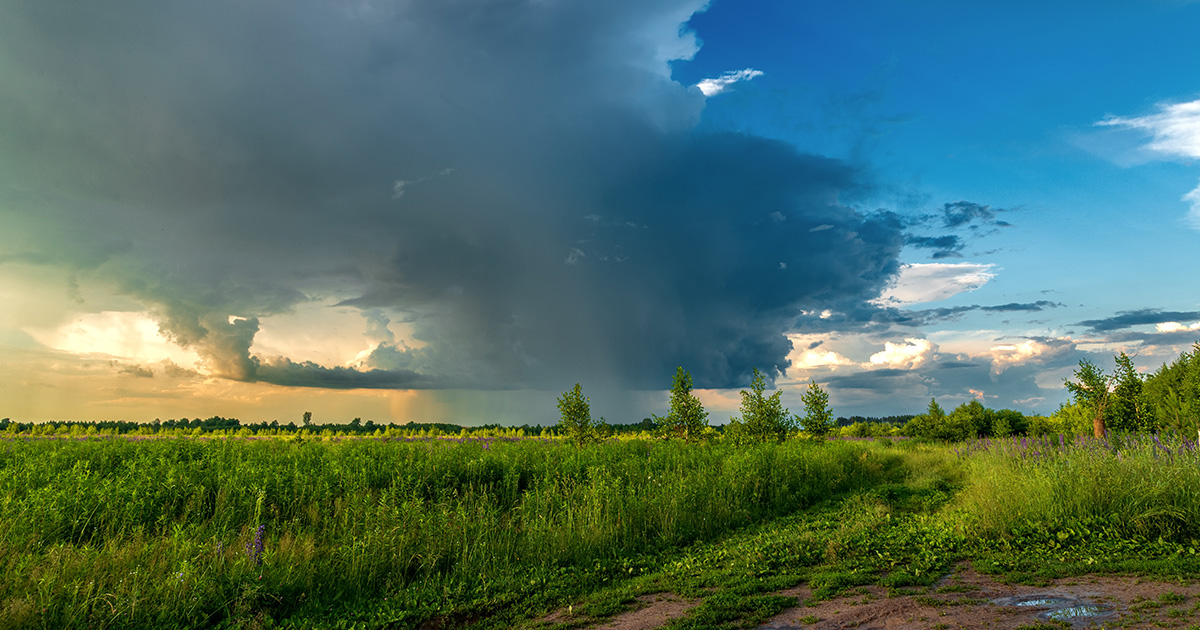The Woolcock Institute of Medical Research

Thunderstorm asthma
In recent years, we’ve heard more about thunderstorm asthma, and with good reason. The phenomenon became widely reported following a devastating event in Melbourne in November 2016, when thousands of people experienced sudden breathing difficulties, emergency departments were inundated and nine people died. Since then, thunderstorm asthma has become a priority area for researchers and public health authorities.
Thunderstorm asthma occurs when a thunderstorm coincides with high pollen levels, creating a surge of fine allergenic particles in the air. Strong winds and updrafts lift pollen grains – especially ryegrass pollen – high into the atmosphere, where humidity causes them to swell and burst into hundreds of microscopic fragments. When the storm’s downdraft brings these particles back to ground level, they are easily inhaled deep into the lungs.
Because the fragments are so small, they bypass the body’s usual defences and reach the lower airways, triggering inflammation, coughing, and wheezing. For people with asthma or hay fever – and sometimes, even people who have no prior asthma diagnoses – this can provoke severe, sudden symptoms.
In Australia, the highest-risk period is from late October through December, when grass pollen counts peak and spring-summer thunderstorms are most common. Southern regions such as Victoria, southern New South Wales and parts of South Australia are particularly vulnerable.
Want to stay up to date with our research on sleep and respiratory conditions?
Sign up to our quarterly newsletter
Although large-scale events are rare, the environmental conditions that drive them may be increasing. Longer pollen seasons, higher pollen loads and changing weather patterns linked to climate change could raise future risk, making awareness and preparation essential.
Those most at risk include:
- People with current or past asthma, even if mild or well-controlled.
- Individuals with hay fever triggered by grass pollen.
- Anyone who wheezes or coughs during pollen season without a formal asthma diagnosis.
Prevention and preparedness are key. Keep your asthma management plan up to date, ensure you have access to a reliever inhaler and manage hay fever with antihistamines or nasal corticosteroids.
Dr Colin Tuft, a respiratory specialist at the Woolcock Clinic adds: “Stay inside before and during storms with wind gusts. Keep an eye on pollen levels and be cautious when these are high. Ensure windows are shut and the air conditioner is switched to recirculate/recycled. Consider wearing an N95 or face mask which may help reduce exposure to pollen allergens if you need to be outside. Speak to your GP or respiratory specialist about inhaler or medication management during storms.”
The multidisciplinary respiratory team at the Woolcock Clinic provides comprehensive assessment, diagnosis, and management for asthma and allergy-related respiratory conditions. Guided by the latest research, we deliver evidence-based care and prevention strategies to help protect you when the next storm hits.










